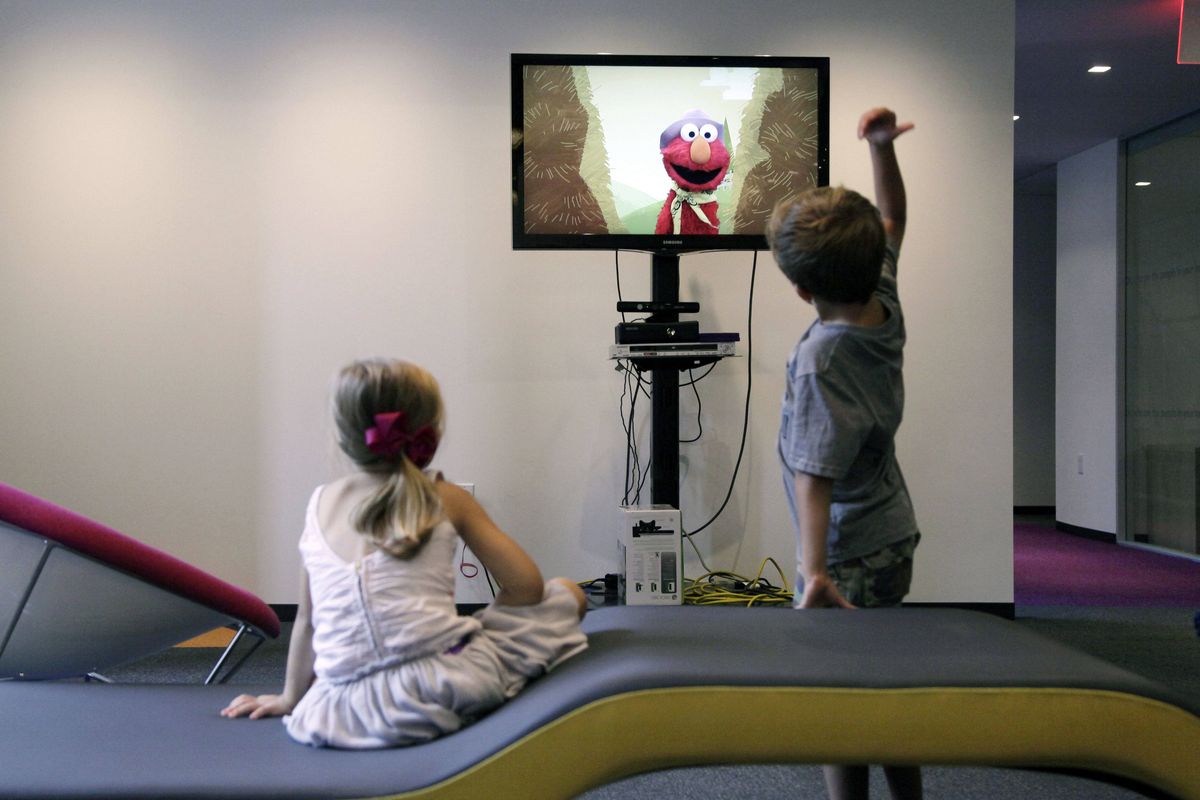Interactive ‘Street’ lets kids play along

NEW YORK – Elmo, Big Bird and the rest of the “Sesame Street” crew have always talked to kids. Now, they’ll try to have a two-way conversation with their pint-sized audience using Kinect, the motion and voice-sensing controller created by Microsoft.
“Kinect Sesame Street TV,” out Tuesday, is not exactly a video game, though it runs on the Xbox 360 video game system. There are no winners and losers, no real rules to follow and no points to score. If you don’t want to play, that’s fine. Just sit back and watch “Sesame Street,” as kids have for the past 43 years. But if you do play, Grover will count coconuts you’ve thrown, the Count will praise you for standing still, and Elmo will catch a talking ball if you throw it to him.
The episodes presage the next step in the evolution of television, adding an interactive element to what’s still a passive, lean-back experience. As you watch children playing the “Sesame Street” game, it’s easy to imagine a not-so-distant future where viewers become participants, affecting a show’s outcome.
“Kinect Sesame Street” “allows the child to participate in the narrative plot,” says Emory Woodard, communications professor at Villanova University in Pennsylvania. Woodard, who worked at Children’s Television Workshop – what is now Sesame Workshop – in 1995, notes that a lot of TV programming aimed at preschoolers involves characters talking to the kids. “But in this case,” he adds, “the characters can react to the child’s response.”
It’s not entirely clear, though, whether that makes a difference to them.
“That’s a research question to explore,” Woodard says.
Two- and 3-year-olds, he notes, are at a very “egocentric” stage of development. They already experience on-screen characters as if they were talking to them, even with traditional television programs. They start growing out of that around 4, but by 5 they’ll have more or less grown out of “Sesame Street,” too. (“Kinect Sesame” is recommended for children 3 and up.)
Jack and Zoe Shyba, the 5- and 4-year-old kids of mommy blogger Jessica Shyba, at first just watched the show intently when they saw a preview at the Sesame Workshop in New York. The letter of the day, as it happens, was “S.” But as soon the characters started to ask them to do things, they obliged.
Kinect works by first calibrating to users’ bodies so it can track their movements when they throw a virtual ball to an on-screen character or pluck virtual carrots from Elmo’s garden. With teenagers and adults, this means moving your body into various poses that are reflected by a bare-bones figure on screen.
With small children as the focus, the creators tried a different approach. Instead of having an on-screen avatar mimic their movements, “Kinect Sesame Street” has them step into an on-screen mirror so they can see themselves on TV.
“We were spending a lot of time talking about how to get a kid calibrated in a way that was fun,” said Josh Atkins, Xbox executive producer of Kinect Sesame Street. The best way, it turned out, was to have an on-screen “character” that is essentially a mirror. “When they see themselves on TV, they tend to pay attention.”
“Sesame Street” first aired on public television in 1969 with the aim of educating preschoolers and helping them transition to school. “Kinect Sesame Street TV” starts off by using content from the show’s 42nd season. The game is available in disc form and as a download through Xbox Live. For $30 users can purchase a package that includes eight 30-minute episodes on two discs. Users can also purchase single episodes for $5.
Rosemarie Truglio, senior vice president of education and research at Sesame Workshop, said children can learn through linear content – such as watching an episode – and through interactive content.
“We have never tried this,” she said. “We’ve never taken a ‘Sesame Street’ episode and turned it into an interactive experience.”
Truglio points to a math example. There’s a scene in the show where Grover slips on a banana peel and drops a box of coconuts. Kids who don’t want to interact with Grover can continue watching the show. Or, they can stand up and throw virtual coconuts back to Grover, who will count out the pitches until he gets six. At the Sesame Workshop, Jack and Zoe mimicked throwing the coconuts and counted with Grover until they got all of them.
“We want to get children to understand what ‘5’ is, or the meaning of what ‘6’ is,” Truglio said. “They have to throw six times (so) you have an action that